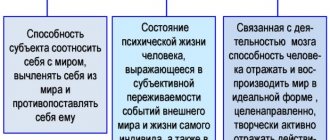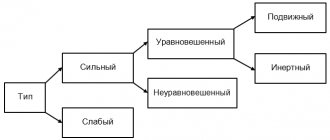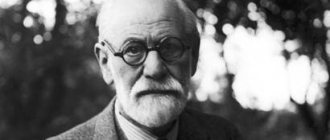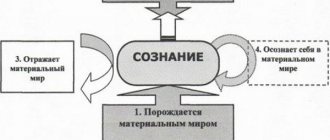What is temperament
Temperament is a complex of individual personality characteristics that determine the dynamics of its behavior and mental activity.
Temperament
It is laid down at birth and depends on the nervous structure of the body, the type of its higher nervous activity.
Each type is a variant of the norm and has its own positive and negative features. Character is formed on its basis. Temperament cannot be changed. You can only correct its manifestations. Character changes in the process of development, with the help of education, under the influence of society.
Properties of temperament
The properties of temperament determine the mental activity of a person in dynamics. The severity of traits depends on gender. A man more often shows a desire for action. His activity, efficiency, reactivity, plasticity and rate of reactions are higher than those of a woman.
Sensitivity
Sensitivity (sensitivity) is a characteristic that reflects the threshold of minimal impact that can cause a mental reaction.
The lower the intensity of the stimulus, the higher the sensitivity.
Reactivity
A property such as reactivity characterizes the speed of development and intensity of the mental response to an external or internal stimulus (criticism, screaming, pain).
These are involuntary defensive reactions. For example, short temper is the result of high reactivity. So, it is greatest in the choleric type of temperament.
Activity-passivity
The activity of temperament determines the energy potential of a person, which he uses to influence the world around him and himself, for example, to overcome obstacles, achieve a goal, etc. This is the readiness for self-expression and self-realization. To determine the degree of activity, characteristics such as persistence, determination, and concentration are used.
Temperamental energy manifests itself in all areas of a person’s life: in the family, in the profession, on vacation. The greatest activity is characteristic of phlegmatic people, the least - of melancholic people.
Passivity is activity that has a negative polarity. In this case, one can observe lethargy of behavior, inertia, lack of initiative, and a tendency to contemplate.
Plasticity-rigidity
These properties characterize a person’s ability to adapt to the influence of an external stimulus or to new conditions, as well as the speed with which his adaptation occurs.
Plasticity determines the flexibility of the psyche, a short adaptive period in case of changing circumstances and a quick change in behavior patterns in accordance with new requirements.
If a person is more rigid, he will show inertia and will slowly adapt to changing conditions, relying on the old model of behavior.
Plasticity is manifested in sanguine people, rigidity - in choleric, phlegmatic and melancholic personality types.
Extraversion-introversion
The terms “extraversion” and “introversion” were introduced to define the dependence of human reactions and activity on external (people, circumstances, things) or internal (thoughts, feelings, emotions) irritating factors.
Introversion is a temperamental property characterized by a focus on internal mental activity. He is characterized by isolation and a desire for privacy.
Extraversion manifests itself as a concentration on the external world. An extrovert is characterized by such traits as sociability, friendliness, talkativeness, and energy. One personality often exhibits both extroversion and introversion, but in different proportions.
Excitability of emotions
This is a property of temperament that reflects the minimum borderline level of influence that is necessary for the occurrence of emotional reactions and the speed of their development.
The indicator is especially high in melancholic and choleric personality types, low in phlegmatic people.
Rate of reactions
The pace of reactions reflects the speed of mental processes and states. To do this, various indicators are analyzed: intelligence, speed of speech, dynamics of gestures.
A low pace leads to a person reacting slowly to stimuli. For example, he does not have time to follow the interlocutor’s train of thought. The highest rate of reactions is characteristic of the choleric type.
School of I. P. Pavlov
A fundamentally new step in studying the foundations of temperament was made by the Russian physiologist I. P. Pavlov (1849–1936). His research was based on the idea of different types of the human nervous system, which was formulated while studying the conditioned reflex reactions of dogs that demonstrated some individual differences in behavior. These differences, in particular, manifested themselves in the speed and accuracy of the formation of conditioned reactions, their intensity, the dogs’ ability to adequately respond to stimuli, general behavior in the experimental situation, etc.
Methods for classifying psychotypes
There are several concepts for classifying psychotypes. Some of them are already outdated.
According to the processes of excitation-inhibition
Personality typology I.P. Pavlova is based on the fact that human behavior directly depends on the basic nervous processes - excitation and inhibition. The main parameters of these processes in various combinations form four types of higher nervous activity:
- sanguine - strong, balanced, agile type;
- phlegmatic - strong, balanced, inert type;
- choleric - strong, unbalanced, mobile;
- the only weak type is the melancholic.
Strength is the ability of the nervous system to resist the effects of strong stimuli. A strong nervous system is characterized by good performance, restraint, patience and perseverance. Weak ones are characterized by rapid fatigue, low endurance, and anxiety.
Balance depends on the correlation of excitation and inhibition with each other. A person with a balanced nervous system has discipline and the absence of sharp emotional fluctuations. An unbalanced person is incapable of waiting and suffers from sleep disorders.
Mobility determines the rate of alternation of inhibition and excitation. An active temperament is characterized by rapid adaptation, mental agility, active motor skills and speech articulation.
Galen's typology
The ancient physician Gallen suggested that the stable individual characteristics of a person and his behavior are in correlation with chemical processes in the body and depend on the predominance of one of the vital fluids in it. He identified the following types of temperaments:
- A phlegmatic person is a person whose body is dominated by viscous lymph (phlegm) - calm and slow.
- Choleric is a person who produces a lot of bitter bile (“chole” in other Greek) - hysterical, hot-tempered, rude.
- A sanguine person is an individual whose body is dominated by blood (“sangvis” in Latin) - active, cheerful.
- A melancholic person is one who has the most black bile in the body (“melena chole” in Greek) - anxious, sad, withdrawn.
According to the ratio of signaling systems
The first signaling system is conditioned reflexes that arise under certain environmental conditions. These are impressions and sensations from external conditions - natural and social, which allow you to form your own idea of the current situation and surrounding objects.
The second signaling system is higher, abstract thinking, closely connected with speech, which allows one to escape from reality and allows generalization
The typology in this case is based on the ratio of 1 and 2 signaling systems, as a result of which the following psychotypes are distinguished:
- Art. It is characterized by the predominance of conditioned reflexes over abstract thinking. A person with an artistic temperament perceives the surrounding reality figuratively, relying on feelings.
- Thoughtful. This psychotype is characterized by a predominance of abstract thinking over reflexes. People with this temperament are able to build logical chains and think abstractly.
- Harmonious. This is an intermediate psychotype, which is characterized by balance, an equal ratio of 1 and 2 signal systems. The majority of people belong to this type.
Kretschmer's constitutional theory
E. Kretschmer's constitutional typology of temperaments is based on the relationship between the structure of the body and the mental characteristics of a person. Depending on the prevailing emotional reactions, Kretschmer identified 2 groups of people
- Diadetic, which is characterized by changes in mood on the “cheerful-sad” scale. People from this group have a cyclothymic type of temperament with signs of the behavior of patients with manic-depressive syndrome: mood swings from joy to sadness, sociability, and a realistic view of the world.
- Psychoaesthetic, which is characterized by a change in sensitivity on the “sensitive-insensitive” scale. They are characterized by a schizothymic (close to schizophrenia) type of temperament. These are closed people, prone to emotional fluctuations from irritation to indifference, to abstraction, stubborn people who do not adapt well to new conditions and surroundings.
Bibliography
1. Luria A.R. Lectures on general psychology / A.R. Luria. - SPb.: Peter. — 320 s.
2. Maklakov A.G. General psychology / A.G. Maklakov. - St. Petersburg: Peter, 2001. - 592 p.
3. General psychology: Educational and methodological manual / Ed. ed. M.V.Gamezo. - M.: Os-89, 2007. - 352 p.
4. Petrovsky A.V. General psychology / A.V. Petrovsky. - M.: Education, 1976. - 479 p.
5. Sorokun P.A. Fundamentals of psychology / P.A. Sorokun. - Pskov: PGPU, 2005 - 312 p.
6. Merlin V.S. Essay on the theory of temperament / V.S. Merlin. - M.: Education, 1964. - P.3-18.
7. Petrova O.O. developmental psychology: Lecture notes / O.O. Petrova, T.A. Umnova. - Rostov-on-Don: Phoenix - 2005. - 222 p.
Posted on
Examples of similar educational works
Development of musical and creative abilities of children of middle preschool age in...
... “problem of the century”, since its solution is connected with issues of the general development and upbringing of the child, with the formation of his personality. The ability to be creative is something that has always been defining...
Development of the psyche in phylogenesis. The emergence and development of consciousness (Semenova L.E. General ...
... the brain is the central nervous system. Simultaneously with the development of the nervous system and receptors, they improve... to sensitivity. Irritability is the property of a living organism to react to ... a person in society (children - Mowgli have no consciousness) ...
Personality development pre-scientific. period
...take care of raising children. Explaining development, Aristotle, in contrast ... by force, is capable of changing the physiological properties of this organism in ... a child, certain affects, adults form his nature, his body, the entire system ...
Development of everyday activities in preschool age (from birth to 7 years)
... establish the simplest cause-and-effect relationships. Let us recall the features of the development of everyday activities at an early age: everyday processes contribute to expanding the child’s sphere of independence; - the child develops cultural and hygienic skills,...
Development of physiology and internal medicine in the modern era
... systems, nervous activity in the works of AM Filomafitsky, E.O. Mukhina, I.M. Sechenova, I.P. Pavlova, N.E. Vvedensky. 5. Development... mechanisms of juice secretion and the importance of the digestive properties of saliva, gastric juice and pancreatic secretions...
Characteristics and features of the main psychological types
There are 4 types of higher nervous activity, on the basis of which temperament is formed: weak (melancholic), unrestrained (choleric), lively (sanguine) and calm (phlegmatic).
Sanguine
A sanguine person is characterized by extraversion, an optimal rate of reaction, reduced sensitivity (does not show sensitivity to trifles, is an optimist), good plasticity, high activity, balanced by reactivity. With high performance, he has low fatigue, a lively but not excessive reaction to stimuli, and emotional stability.
Choleric
This type of temperament is characterized by extraversion, strong emotional excitability, rigidity, high rate of reactions, low sensitivity, pronounced reactivity and activity. Moreover, reactivity predominates. Therefore, he is characterized by short temper, lack of patience, imbalance, and emotional instability.
Rigidity prevails over plasticity. Cholerics quickly become exhausted.
Phlegmatic person
Phlegmatic people are characterized by introversion, low sensitivity and emotional excitability. They are calm and have limited facial expressions.
They have a slow pace of reactions, high activity with low reactivity, which allows them to perfectly control their emotions, thoughts and actions. They are characterized by good self-control, restraint, patience, and emotional equanimity.
Melancholic
Melancholic people are characterized by introversion, pronounced sensitivity, high emotional excitability against a background of rigidity, inertia, passivity and low reactivity, depression.
Temperament with such properties is manifested by tearfulness, timidity, touchiness, vulnerability, indecision, cowardice, isolation, self-doubt, inhibited reaction to strong stimuli, low performance and fatigue, unstable attention.
Definition of basic temperaments in psychology
Choleric
Choleric people are overly mobile, fast, excitable, unbalanced , all their psychological processes are intense and fast. The predominance of excitation over inhibition characteristic of this type of nervous activity is expressed in the impetuousness, lack of restraint, irritability, and hot temper of the choleric person. This results in hasty speech, expressive facial expressions, unrestrained movements, and sharp gestures.
The feelings of a choleric person are strong, as a rule, they arise instantly and are clearly manifested; the mood sometimes changes dramatically. The imbalance that is characteristic of a choleric person is clearly associated with his work: he enthusiastically and even passionately gets to work, while showing speed of movement and impetuosity, overcoming difficulties, working with enthusiasm.
But a choleric person can quickly deplete his supply of nervous energy during work, and in this case a sharp decline in work may occur: the mood drops sharply, inspiration and elation disappear. When communicating with others, a choleric person allows emotional incontinence, irritability, and harshness; this often does not allow him to objectively evaluate people’s actions, because of this, he creates conflict situations . Excessive temper, straightforwardness, intolerance, and harshness sometimes make being in a group of these people unpleasant and difficult.
Sanguine
A sanguine person easily moves from one type of activity to another, is cheerful, and quickly gets along with people. A sanguine person quickly gets accustomed to a new environment and easily controls emotions. His speech is clear, fast, loud and accompanied by expressive gestures and facial expressions. However, this temperament is characterized by a certain duality . When stimuli change quickly, the interest of impressions and novelty are constantly maintained, then this person manifests himself as energetic, active, active, that is, a state of active excitement is created.
When the effects are monotonous and prolonged, they do not support excitement, a state of activity, and the sanguine person loses interest in the matter, this person develops lethargy, boredom, and indifference. A sanguine person quickly develops feelings of grief, joy, hostility or affection, but all such manifestations of his feelings are not distinguished by depth, duration and stability. They appear quickly and can also quickly disappear or even change to the opposite. A sanguine person's mood changes quickly , but most often there is a good mood.
Melancholic
Psychological processes in these people go through slowly, they react with difficulty to powerful stimuli; strong and prolonged overexertion in these people causes slow activity, and then its cessation. Melancholic people are usually passive at work and often have little interest. Emotional states and feelings in melancholic people appear slowly, but are characterized by duration, great strength and depth. These people have a hard time withstanding grief and resentment, and are easily vulnerable, although outwardly all these experiences are not expressed.
Melancholic people avoid communicating with new and unfamiliar people, are prone to loneliness and isolation , show awkwardness in new surroundings, and are often embarrassed. Everything unusual and new causes a state of inhibition in melancholic people. But in a calm and familiar environment, these people work quite productively and feel calm.
Phlegmatic person
A phlegmatic person is calm, slow, balanced, unhurried. In his work he shows perseverance, thoughtfulness, and thoroughness. Most often, he brings any task to the end. All psychological processes in this person seem to be slow. His feelings are expressed outwardly weakly, as a rule, they are inexpressive. A phlegmatic person in relationships with people is always moderately sociable, calm, even, and has a stable mood.
It is difficult to touch a phlegmatic person emotionally and make them angry. It is easy for him to develop calmness, composure, and restraint . However, a phlegmatic person needs to develop the qualities he lacks - activity, greater mobility, to avoid indifference to work, inertia, lethargy, which are easily formed in certain conditions.
Definition of temperament and brief instructions for interaction
Groups that include people with different types of temperament work most effectively.
With a choleric person
The choleric type is characterized by impulsiveness, impetuosity and speed of movements, high excitability, harshness in communication, irritability, a tendency to emotional outbursts, and mood swings.
Possible rudeness, hot temper, affectation, inability to control oneself, touchiness. High efficiency is combined with a rapid loss of interest and the inability to complete a task if the process is delayed. Choleric people can be aggressive and often have difficulty communicating. At the same time, choleric people are optimists, they are full of energy, proactive, charismatic, and quickly forgive insults.
Colleagues should not react to the emotional outbursts of a choleric person or enter into an argument with him. A friendly, confident tone, interest in the conversation, and light, harmless humor will help him calm down.
With a sanguine person
Sanguine people are open, lively, friendly, cheerful, inquisitive, sociable people who easily experience failures. They have a flexible mind. They are resourceful, easily absorb information if desired, strive for new experiences and do not tolerate monotonous work well, and easily cope with organizational tasks.
Possible frivolity in work and study, reluctance to bring things to their logical conclusion, overestimation of one’s own capabilities, superficiality of judgment.
Sanguine people make good leaders at any level, capable of inspiring and organizing employees. To establish relationships, polite interest, praise, and recognition of his merits are enough.
With a melancholic person
Melancholic people are soft, tactful, sensitive and responsive, creative people, prone to reasoning. Under normal circumstances, they can be sociable, work well, be persistent and goal-oriented.
These are conscientious and responsible workers. They can be depressed, anxious, gloomy, secretive, and pessimistic. They do not tolerate stress well and do not like to make decisions.
Melancholic people are rarely interested in others. They easily obey, do not participate in competitions, and prefer to remain on the sidelines. You need to talk to a melancholic person calmly, without harsh words or intonations, and often praise.








